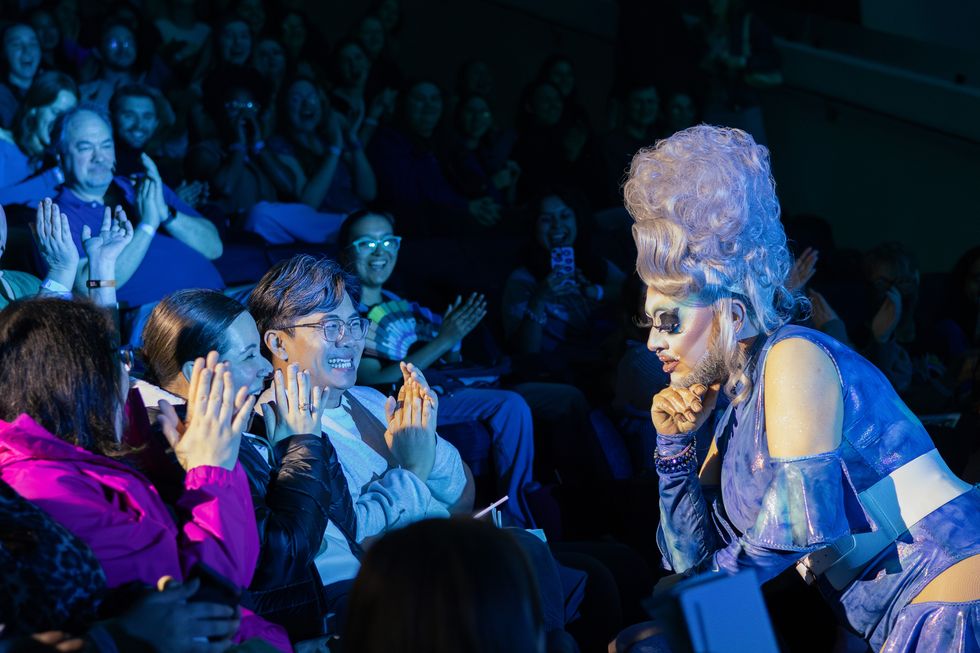Every three months, GOOD releases our quarterly magazine, which examines a given theme through our unique lens. Recent editions have covered topics like the impending global water crisis, the future of transportation, and the amazing rebuilding of New Orleans. This quarter's issue is about cities, spotlighting Los Angeles, and we'll be rolling out a variety of stories all month. You can subscribe to GOOD here.
Los Angeles has no business being a major city. That is to say, through the plain, unforgiving lens of physical geography, there simply isn’t enough water to quench the collective thirst of the roughly 10 million residents of Los Angeles County. If it weren’t for a handful of visionaries who imagined, planned, and built the L.A. Aqueduct—one of mankind’s most incredible civic work projects to date when it was built back in 1913—the Los Angeles we know and love today would never have been.
Though it’s a myth that the city inhabits a desert—technically it’s only a semi-arid region; and Spanish explorers chose to settle there because of the abundance of water and lush vegetation relative to the surrounding area—it didn’t take too long for the city to max out on its local water supply. By the turn of the 20th century, the city’s then 100,000 or so residents were already pushing up against the natural limits of the local water supply. In response, William Mulholland, a young engineer and superintendent of the Los Angeles Department of Water and Power, led projects that frantically built water mains, dug reservoirs, and tamed the once-wild Los Angeles River to tap it for every spare drop. But as the city grew at breakneck speed, Mulholland ran the numbers and foresaw chronic shortages, where even the wettest years would come up 10 percent short of the city’s water needs. When his exhaustive search for any local supply came up dry, Mulholland looked further afield.
An old boss pointed him toward the Sierra Nevadas. Frederick Eaton, the one-time mayor of Los Angeles who had appointed Mulholland as LADWP superintendent, had discovered the Owens River Valley on a camping trip a few years earlier, and brought Mulholland back. The engineer was convinced: The Owens River, gushing out of the Eastern Sierra, would supply Los Angeles with water. That the valley was more than 200 miles from Los Angeles was seen as nothing more than an engineering challenge.
While Eaton, ever the entrepreneur, was buying up land and water rights in the valley (to eventually sell back to the city), Mulholland was developing a plan for a massive aqueduct to usher the water from the foot of the Sierra to the coast. He needed $25 million to build it. The public would have to be convinced, and so he brought Harrison Gray Otis, publisher of the Los Angeles Times, on board to win the hearts and minds of Angelenos. Headlines like “Titanic Project to Give City a River” (July 29, 1905) helped secure a landslide vote to fund the aqueduct with public bonds.
Five years, $22.5 million dollars, 142 tunnels, 43 lives, and 226 miles later, the Los Angeles Aqueduct was complete. At the opening ceremony, Mulholland’s comments were brief: “This rude platform is an altar, and on it we are here consecrating this water supply and dedicating the Aqueduct to you and your children and your children’s children—for all time.”
He then turned to the mayor and said, “There it is. … Take it.”
The water flowed, but the victory was short lived. The city was bursting at the seams. From the 100,000 mark at the turn of the century, Los Angeles tripled in size in a decade, reaching 500,000 by 1920, and topping a million by 1930. Mulholland’s once proud declaration, “Whoever brings the water, brings the people,” started to feel more ominous than optimistic. In the 1920s, the Metropolitan Water District was formed and another, longer, aqueduct was built to bring the Colorado River’s waters to Los Angeles. The city grew. The Mono Basin Project brought more water from even farther away. The city grew. In 1970, a second Los Angeles Aqueduct brought more water.
The city is growing still, and the water continues to arrive from elsewhere: Yet today, roughly 85 percent of the water flowing through Los Angeles’ pipes comes from afar. A mere 15 percent of Los Angeles’ water comes from local groundwater sources.
Whoever brings the water, brings the people.
So what happens if the long straws run dry? The Colorado River hasn’t reached the sea in decades, and a long-standing drought has cut its flows, while higher demand upstream has ended the surplus deliveries that kept that aqueduct full. The Sierra snowpack is expected to shrink by at least 25 percent by mid-century, meaning less meltwater will flow through the aqueducts, and current environmental restrictions have already lessened the amount of water Los Angeles can suck from the Owens Valley and neighboring Mono Basin.
Another massive endeavor, the State Water Project’s California Aqueduct—the biggest, most expensive, and longest of them all—was conceived in the 1960s to transport water more than 400 miles, from the Sacramento Delta down to Southern California, but the project is highly controversial, because of the ecological strain on the Delta and Northern California’s resistance to a water grab, and the SWP struggles to deliver half the water to Southern California that is contracted.
The conflicting trends of population growth and dwindling water supply don’t bode well for the future of this city that is so perilously dependent on funneling in water from afar. Will the true marvels of engineering that made L.A. possible ultimately prove to be its downfall?
Or will new solutions emerge that are as bold as Mulholland’s vision seemed back in 1905.
Take desalination. Large-scale reverse osmosis desalination plants are, right now, actually being built. Australia’s the global leader, and you can be sure that L.A. city officials are looking down the coast at San Diego’s Poseidon plant, which is promising to drink from the sea and deliver 50 million gallons of freshwater every day to the city of San Diego, a drought-proof supply for a population of about 300,000.
Another option being explored is a “groundwater replenishment system.” That’s the polite term for taking wastewater (yes, that which once flowed through a sewer) and purifying it using a combination of fancy, expensive processes like reverse osmosis, microfiltration, ultraviolet light, and hydrogen peroxide disinfection. It’s happening now, awfully close to Los Angeles. A couple years ago the Orange County Water District opened the world’s largest such wastewater recycling plant. In fact, if you’ve visited Disneyland recently and sipped from a water fountain, you’ve already drunk this “toilet-to-tap” water.
Of course, good old-fashioned conservation has a role to play as well. Command-and-control measures have already been implemented: Angelenos should get used to higher water rates in shortage years and restrictions on some uses like watering lawns or washing cars. Rebate programs can also help residents save on more water-efficient appliances, and conservation kits (with simple water-saving devices like low-flow showerheads and faucet aerators) are available from LADWP for free.
But even the most widespread civic conservation efforts are going to butt up against the hard physical and natural realities. Can a city of 10 million keep growing if the most elemental of human needs is in short supply? Mulholland might’ve warned: Whoever loses the water, loses the people.
















 Let us all bow before Gary, the Internet's most adventurous feline. Photo credit: James Eastham
Let us all bow before Gary, the Internet's most adventurous feline. Photo credit: James Eastham Gary the Cat enjoys some paddling. Photo credit: James Eastham
Gary the Cat enjoys some paddling. Photo credit: James Eastham James and Gary chat with Ryan Reed and Tony Photo credit: Ryan Reed
James and Gary chat with Ryan Reed and Tony Photo credit: Ryan Reed

 Rock deterioration has damaged some of the inscriptions, but they remain visible. Renan Rodrigues Chandu and Pedro Arcanjo José Feitosa, and the Casa Grande boys
Rock deterioration has damaged some of the inscriptions, but they remain visible. Renan Rodrigues Chandu and Pedro Arcanjo José Feitosa, and the Casa Grande boys The Serrote do Letreiro site continues to provide rich insights into ancient life.
The Serrote do Letreiro site continues to provide rich insights into ancient life.

 The contestants and hosts of Draggieland 2025Faith Cooper
The contestants and hosts of Draggieland 2025Faith Cooper Dulce Gabbana performs at Draggieland 2025.Faith Cooper
Dulce Gabbana performs at Draggieland 2025.Faith Cooper Melaka Mystika, guest host of Texas A&M's Draggieland, entertains the crowd
Faith Cooper
Melaka Mystika, guest host of Texas A&M's Draggieland, entertains the crowd
Faith Cooper


